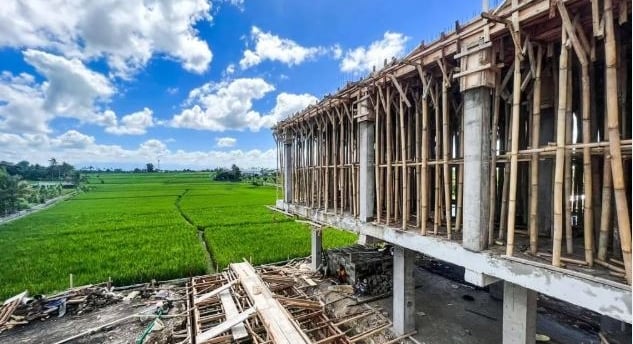Building in Bali: A Guide to Architecture, Property Investment, and Permits
Building in Bali: A Guide to Architecture, Property Investment, and Permits
krisna
6/16/20252 min read


1. Why Bali?
Bali is more than just a tourist paradise — it’s one of Southeast Asia’s most promising locations for property investment. With a booming hospitality and tourism industry, the demand for villas, guesthouses, and commercial properties is consistently rising. However, to build legally and profitably, you must understand tropical architecture, business regulations, and the permitting process in Indonesia.
2. Balinese Tropical Architecture: More Than Just Aesthetics
Key Characteristics of Modern Balinese Architecture
Climate-Responsive Design: Large openings, cross ventilation, and the use of natural materials such as timber, local stone, and thatched roofs.
Seamless Nature Integration: Lush gardens, indoor-outdoor living, reflective pools, and abundant natural lighting.
Cultural and Spiritual Identity: Layout based on local philosophies (e.g., Sanga Mandala), traditional ornamentation, and orientation considerations.
Design with Investment in Mind
Aesthetic yet energy-efficient designs increase rental appeal.
Flexible layouts that cater to both short-term stays and long-term living.
Green building certifications are becoming increasingly attractive to global investors.
3. Property Business in Bali: Opportunities and Challenges
Popular Property Types
Villas and Resorts: High demand in areas like Canggu, Ubud, Uluwatu.
Premium Guesthouses or Boarding Houses (kos-kosan) in urban zones.
Co-working & Co-living Spaces: A growing niche fueled by digital nomads.
Ownership and Legal Structures
Foreign nationals (non-Indonesians) cannot own freehold land, but can invest via:
Leasehold agreements
PT PMA (foreign-owned limited liability company) with right-to-use
Joint ventures with local partners (with strict legal oversight)
4. The Permit Process: What You Need to Build Legally in Bali
Key Legal Documents
PKKPR (Zoning and Land Use Approval)
PBG (Building Permit, replacing the old IMB system)
SLF (Certificate of Building Worthiness) – required to operate the building
Environmental Documents – SPPL, UKL-UPL, or AMDAL depending on project size
NIB and Business Licenses via OSS RBA – required for both local and foreign entities
Important Notes
Each sub-district in Bali has its own zoning regulations (RDTR). Your project must align with the designated land use.
Buildings without PBG or SLF are considered illegal, subject to fines, demolition, and ineligible for insurance or resale.
5. Practical Tips for Designing and Permitting
Work with local architects who are familiar with tropical design and Indonesian building codes (SNI).
Consult early with a permit specialist to ensure your concept complies with zoning laws and avoids costly redesigns.
For foreign investors, always engage a licensed notary and legal advisor familiar with PT PMA structures and land agreements.
6. Final Thoughts: Design With Vision, Build With Confidence
With the right architectural concept, clear business strategy, and proper permits, your Bali property can be a beautiful, legally secure, and profitable investment.
Bali isn’t just a place to visit — it’s a place to create, invest, and thrive.
